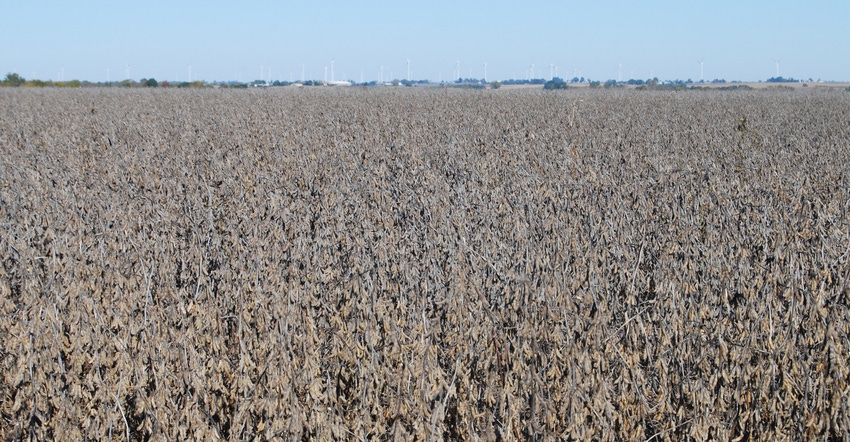November 25, 2019

We’re getting to the end of another challenging crop year, but that doesn’t mean the work lets up much. On top of wrapping up harvest, fall anhydrous application and fieldwork, it’s also time to start other 2020 crop planning. With prepay season coming up fast, let’s talk about fine-tuning soybean seed selection for next year.
While Mother Nature has a huge say in determining yields, we have some influence with other factors like management strategies and the soybean genetics we plant, so we’ll dive a little deeper into those topics.
With yield potential being a top criteria we look for in seed beans, the good news is there’s a lot of yield information. The bad news is even with all that data to dig through and make sense of, for some products, you may want more. While we may get hit with information overload for some varieties that have been around a season or two, finding enough multiyear, multi-location data for new products can be challenging.
Getting started
Two solid places to find yield data are Iowa State University’s own Iowa Crop Improvement Tests at croptesting.iastate.edu and the Farmers Independent Research of Seed Technologies at firstseedtests.com.
Between the two programs, regional yield data is available for hundreds of soybean varieties across many locations and a fair amount of it multiyear. With multiyear data for new genetics hard to come by, the best alternative is to look at the one-year results from the Iowa Crop Performance Test and other sources where there are replicated trials from numerous locations.
Local and regional test plot results can be useful in getting info on new varieties. Some farmers share yield data on their varieties with neighbors or local groups. Occasionally, there can be some limited data on new varieties in yield information exchanges like these if somebody had access to the variety a year ahead of a full release or if they raised seed beans for a company.
Next steps
We can increase our odds of getting higher yields by matching soybean agronomic traits to our particular soils and production systems. Seed companies provide a lot of information to sort through as well. Sure, the trait rating systems that different seed companies use are often subjective and may not be easy to compare across the industry, but they’re a good starting point. For some agronomic traits there may be independent data to work into your decision-making process.
The list of these traits is long, so we’ll lay out a few key priorities:
Soybean cyst nematode. SCN is found in about 75% of Iowa fields. We must look at both yield potential and how effective the SCN resistance is of the beans you are considering. Check the article at SCN-resistant Soybean Varieties for 2020.
Diseases. Like SDS, white mold and phytophthora to name a few. If you have fields with a history of disease issues, talk with your seed adviser about varieties with decent ratings against your specific challenges.
Weed management. Herbicide resistance traits is a topic worthy of its own article given its complexity. But a general theme with these traits is once you settle on the varieties that fit your other agronomic needs, line up some time to talk with your chemical supplier about a weed management program.
Hope you all wrap up fall work safely and have a happy Thanksgiving!
McGrath is the on-farm research and Extension coordinator for the Iowa Soybean Research Center at ISU. Contact him at [email protected].
About the Author(s)
You May Also Like






